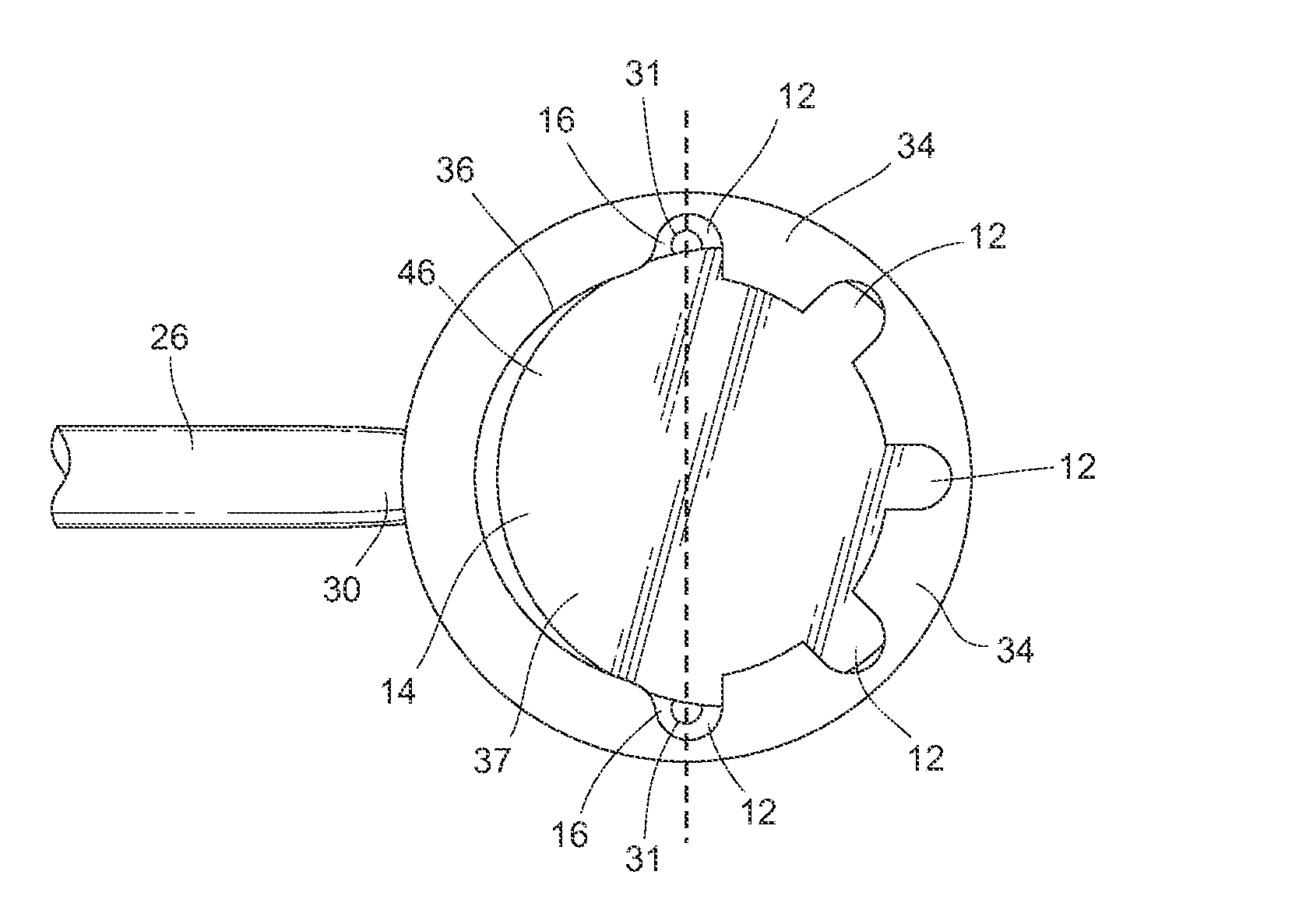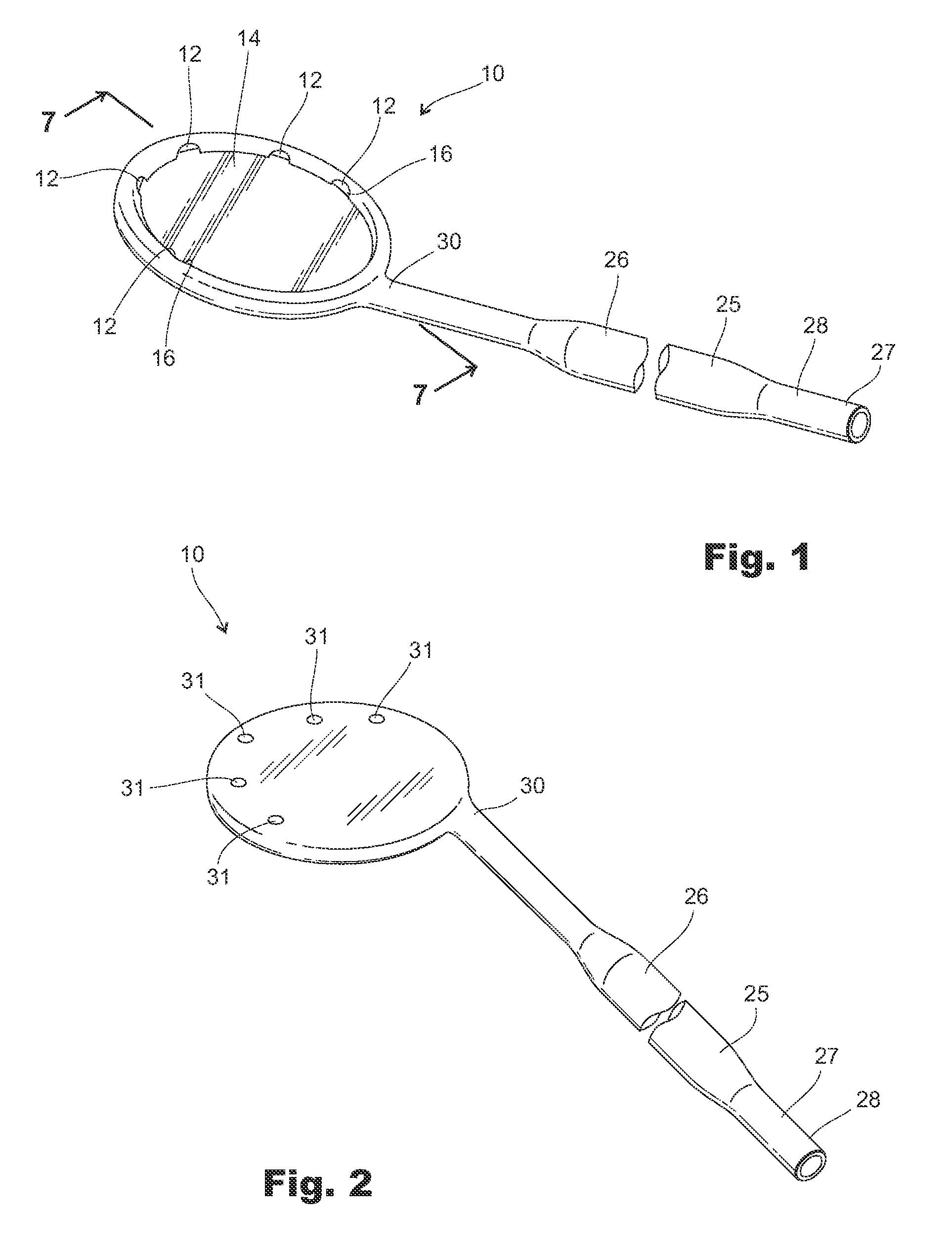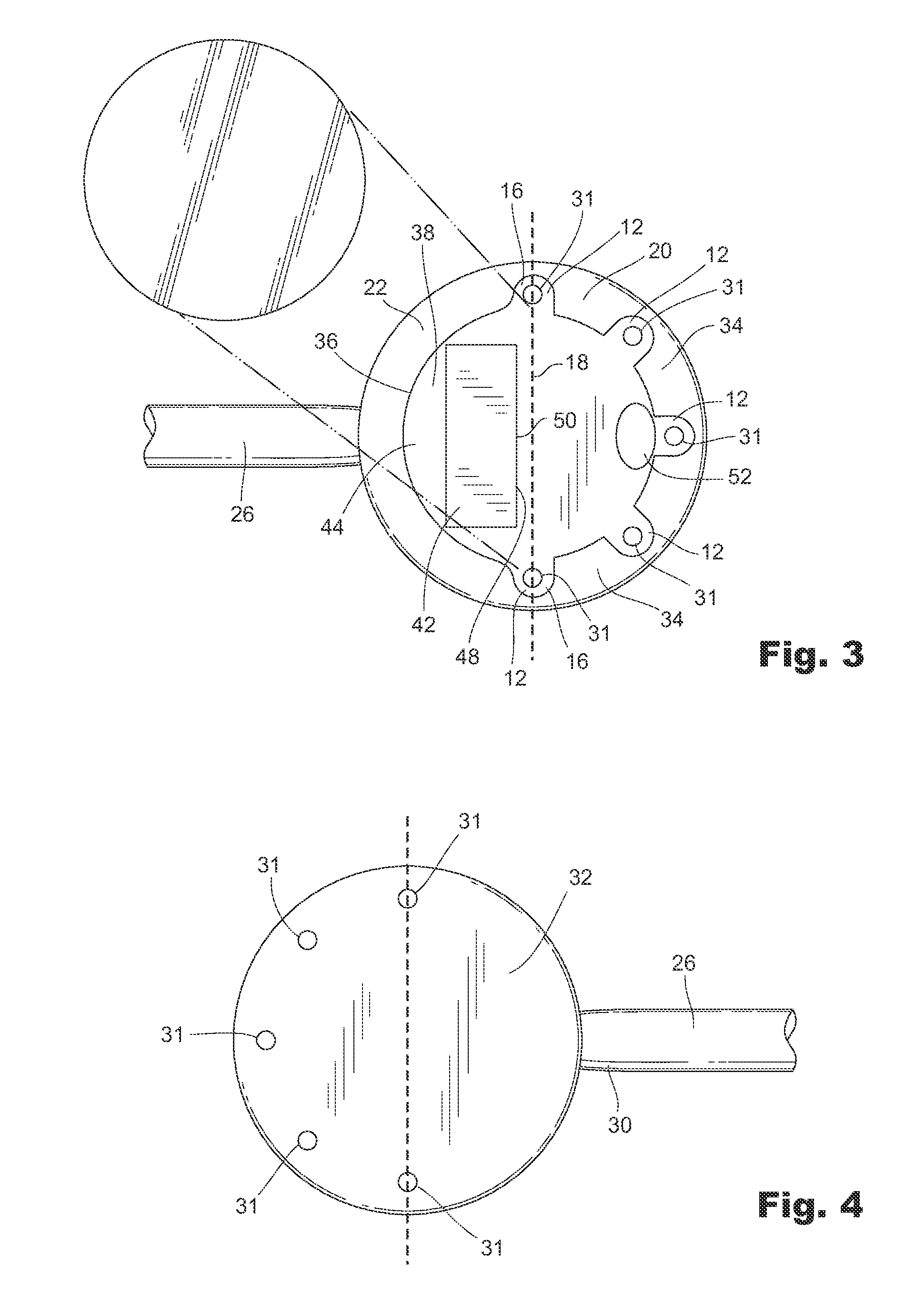Dental mirror with mirror-cleaning suction
a technology of mirrors and dentins, applied in the field of dentins with suction, can solve the problems of robbery of suction, ineffective port in the rearward half of the periphery of the reflective surface, and common obscurement of dentins, etc., and achieve the effect of convenient us
- Summary
- Abstract
- Description
- Claims
- Application Information
AI Technical Summary
Benefits of technology
Problems solved by technology
Method used
Image
Examples
Embodiment Construction
[0023]The dental mirror 10 of the present invention includes mirror cleaning suction through a plurality of suction ports 12 on the periphery of the mirror's reflective surface 14. The ports 12 are spaced apart about a forward half of the mirror 10 with the suction ports 12 directed across the reflective surface 14, two of which also function as a pair of access ports 16 whose centers lie on a diameter 18 dividing mirror forward and rearward halves 20, 22.
[0024]A handle 26 extends from central in the rearward half 22 of the mirror 10 and provides fluid communication through the handle 26 between a suction device (not shown) connectable to a handle first end 28. Dental offices employ low and high speed suction vacuum lines. Small vacuum lines of about 0.25-inch diameter and large vacuum lines of about 7 / 16-inch diameter are used with the respective low and high speed suction vacuum lines to assure implements are correctly connected to the required suction line. The handle 26 accommod...
PUM
 Login to View More
Login to View More Abstract
Description
Claims
Application Information
 Login to View More
Login to View More - R&D
- Intellectual Property
- Life Sciences
- Materials
- Tech Scout
- Unparalleled Data Quality
- Higher Quality Content
- 60% Fewer Hallucinations
Browse by: Latest US Patents, China's latest patents, Technical Efficacy Thesaurus, Application Domain, Technology Topic, Popular Technical Reports.
© 2025 PatSnap. All rights reserved.Legal|Privacy policy|Modern Slavery Act Transparency Statement|Sitemap|About US| Contact US: help@patsnap.com



